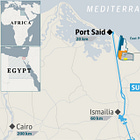Securitising Sovereignty: Egypt’s Sukuk Bet
Cairo risks its sovereignty in exchange for access to Islamic financial markets.
On 29 April 2025, Egypt’s Official Gazette published Presidential Decree No. 303, allocating 174.4 million square metres of state-owned land in the Red Sea Governorate to the Ministry of Finance for issuing sovereign sukuk, Sharia-compliant financial certificates akin to Islamic bonds. This manoeuvre, addressing Egypt’s $165.3 billion external debt (mid-2024) and 92.7% debt-to-GDP ratio, marks yet another attempt to alleviate a chronic debt crisis. However, it highlights Cairo’s growing reliance on foreign financing to manage deepening deficits, raising concerns about long-term sovereignty.
Commodifying Strategic Assets
Egypt’s debt has surged due to large-scale infrastructure projects, currency shortages, and global shocks triggering capital outflows. By issuing $2 billion in sukuk in 2025, as announced by the Egyptian Finance Minister, Cairo aims to tap Islamic finance markets, particularly in the Gulf, to diversify creditors and reduce dependence on Western institutions like the IMF, whose $3 billion 2022 rescue plan imposed stringent conditions. The decree transforms underutilised Red Sea land into tradable securities, leveraging its tourism and resource potential to ease liquidity constraints. The 2023 sukuk issuance, which attracted $6.1 billion in orders for a $1.5 billion offer, signals strong Gulf investor confidence, with a planned $1 billion private placement to Kuwait in 2025.
Yet, this strategy risks new dependencies. Policies targeting Gulf investors may allow them to influence land use, entrenching regional influence, as seen in the UAE’s Ras al-Hekma deal. Critics, including the Egyptian Revolutionary Council, warn that sukuk could enable indirect foreign control over strategic assets like Ras Shokeir’s oil-rich land, especially if Egypt defaults. The lack of parliamentary debate or detailed plans fuels public skepticism, with questions regarding whether this constitutes a disguised asset sale. References to Environmental Protection Law No. 4/1994 and Desert Land Law No. 143/1981 suggest efforts to balance fiscal needs with sustainability, but ambiguity over land use raises concerns about environmental degradation and prioritisation of investor interests over public welfare.
Debt Relief or Long-Term Risk?
The decree’s implications are far-reaching. Successful sukuk issuance could lower borrowing costs compared to traditional bonds, offering short-term debt relief. However, monetising land may limit future policy flexibility for conservation or public housing, a priority given Egypt’s ongoing housing initiatives. Developing the Red Sea region could boost tourism or resource extraction but risks ecological harm without robust oversight, as seen in prior coastal projects. Socio-economic impacts also loom: Egypt’s 7% unemployment rate (2023) and focus on elite-driven projects highlight the risk of inequality if large-scale investors dominate development, sidelining local communities.
Critics, cited by Mada Masr, describe the decree’s debt reduction claims as an “accounting game,” reclassifying debt while tying repayments to volatile projected revenues from land development. The Ministry of Finance insists the land remains state-owned, but public confusion persists. To navigate these risks, Egypt must implement transparent governance. Such measures are critical to balancing fiscal urgency with long-term economic resilience and safeguarding sovereignty.




